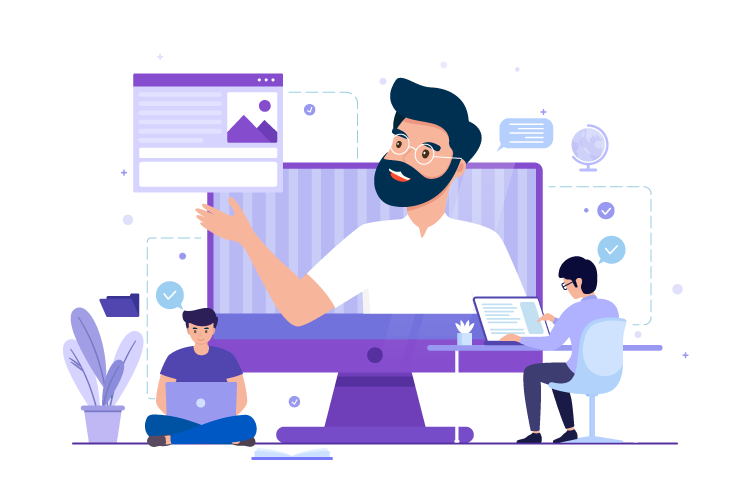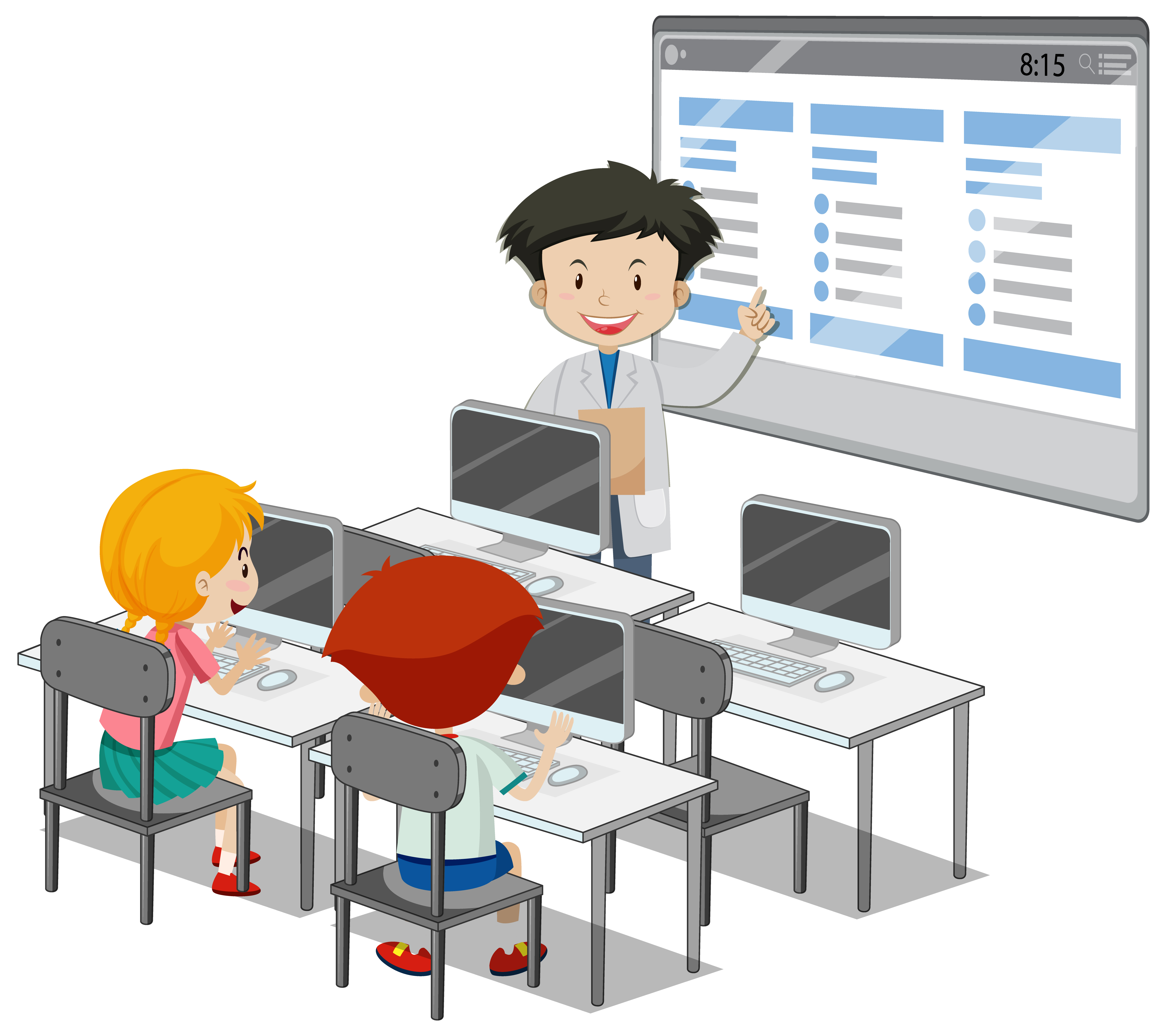Instructor Led Training
CIS1103 - Introduction to Computing
Instructor-led training (ILT) is a traditional form of education that involves a skilled instructor leading a classroom or virtual session to deliver training to learners.
Limited seat available, enroll before date September 29, 2025.
why should buy instructor led course?
Investing in an instructor-led course offers several advantages that can greatly enhance your learning experience. One of the key benefits is the opportunity to receive expert guidance from seasoned professionals who possess extensive knowledge and expertise in the subject matter. These instructors can offer valuable insights, address your queries, and provide guidance tailored to your specific needs. Additionally, instructor-led courses follow a well-structured curriculum, ensuring a comprehensive learning journey that covers all the essential topics. This structured approach enables you to progress in a logical and organized manner, building a strong foundation of knowledge. Moreover, instructor-led courses often provide personalized feedback, allowing you to receive individualized assessments and guidance to improve your understanding and skills.
Professional Certificate.
Obtaining certification of completion is a significant benefit that comes with many instructor-led courses. This certification serves as formal recognition of your successful completion of the course and showcases your commitment to learning and professional development. It can be a valuable addition to your resume or portfolio, highlighting your expertise and dedication in a specific field or skill set. Certification demonstrates to employers, clients, or colleagues that you have acquired the necessary knowledge and skills to perform tasks effectively. It can enhance your credibility and open doors to new career opportunities or advancements. Moreover, certification provides a sense of accomplishment and satisfaction, validating the time and effort you invested in the course. Ultimately, the certification of completion offers tangible evidence of your commitment to continuous learning and professional growth, making it a worthwhile asset in today's competitive job market.
How Does It Work?


Zoom meeting with student twice a week.
As an educator, I have implemented a structured learning approach by conducting Zoom meetings with my students twice a week. This interactive platform has become an invaluable tool for fostering meaningful connections and facilitating engaging discussions in a virtual classroom setting.


AI Tutor support.
Mentoring support plays a crucial role in guiding individuals towards personal and professional growth. By offering mentorship, I provide a safe and supportive space for individuals to explore their goals, challenges, and aspirations.


Assignments and Grade.
Assignments and grading are essential components of the educational process, allowing students to demonstrate their understanding of concepts and skills while providing teachers with a means to assess their progress. Assignments are designed to reinforce learning, encourage critical thinking, and promote independent problem-solving.
Skills You’ll Get
Lesson Plan
Understanding Operating Systems
- Operating Systems and Their Roles When Using Computers and Devices
- Working with Files and Folders
- Customizing Your Computer
- Summary
Understanding Hardware
- The Internal Hardware Components of a Computer
- Peripheral Devices That Can Be Connected to a Computer
- The Most Common Types of Computers and Devices
- How Information Is Transmitted inside a Computer
- How to Evaluate the Performance of a Computer or Device
- Summary
Understanding Software
- The Dependencies between Hardware and Software
- Installing, Removing, or Reinstalling Software
- Software Licensing and Its Implications
- The Most Common Types of Office Applications
- Using Templates to Get Started with an Application
- Personal Entertainment Applications
- Compressing Files to Save Space
- Optimizing Your Computer's Hard Disk Performance
- Protecting Yourself from Malware
- Summary
Troubleshooting Problems with Your Computer
- Dealing with Problems Caused by Software
- Dealing with Problems Caused by Hardware
- Creating Your Own Backup System
- Summary
Cloud Computing
- Cloud computing concepts
- Cloud accounts
- Difference between application and software
- Summary
Networking and Mobile device
- Our Connected World: Communication Systems
- The Internet
- Cell Phone Networks
- Ways of Classifying Networks
- Applications of Mobile Devices
- Summary
Using the Internet
- Understanding the Terminology About the Internet and the WWW
- Understanding the World Wide Web
- Browsing the Web with a Web Browser
- Summary
Understanding Networking and Its Most Important Concepts
- Understanding Networks
- Understanding Network Addressing
- Using and Securing Wireless Networks
- Security Networks with Firewalls and Gateways
- Measuring the Speed of Your Internet Connection
- Understanding the Different Types of Internet Connections
- Virtual Private Networks
- Principles for Troubleshooting Networking Problems
- Troubleshooting Network Problems with the Help of Windows Troubleshooting Tools
- Troubleshooting Network Problems from the Command Prompt
- Summary
Communicating Online with Others
- Creating and Securing Email Accounts
- Sending Email Messages
- Replying to and Forwarding Email Messages
- Automating Your Email Account
- Organizing and Archiving Your Inbox
- Managing Your Calendar
- Communicating through Text Messages
- Communicating through Multimedia
- Using Social Media and Social Networks
- Increasing the Privacy of Your Social Networking Activity
- Summary
Being a Responsible Digital Citizen
- Personal vs. Professional Communication
- Verbal vs. Written Communication
- Inappropriate Ways of Communicating Online
- Censorship and Filters in the Digital World
- Legal and Responsible Use of Computers
- Summary
Maintaining Your Health and Safety While Using Computers
- Internet Security Concerns
- Protecting Your Identity and Your Data
- Removing Data from Your Computer
- Keeping Your Computer Safe from Threats and Malware
- The Ergonomics of Using the Computer in a Healthy Way
- Common Problems That Are Generated by Incorrect Computer Use and Posture
- Summary
Searching the World Wide Web
- Using Search Engines to Find Information Online
- Performing Advanced Searches Using Symbols and Search Operators
- Searching for Files Online
- Dealing with Online Advertisements
- Finding Valuable Information on Internet Forums and Knowledge Bases
- Evaluating the Information That You Find on the Web
- Summary
Exploring Common Application Features in Microsoft Office
- Creating New Empty Documents with Microsoft Office
- The Basics of Using Microsoft Office Applications
- The Basics of Formatting Your Microsoft Office Files
- Working with Multimedia Files in Microsoft Office
- Summary
Using Microsoft Word
- Configuring the Layout of Your Documents
- Organizing the Data in Your Documents
- Summary
Using Microsoft Excel
- Navigating among Worksheets, Workbooks, and Cells
- Changing the Alignment and the Positioning of Cells
- Changing the Size of Cells
- Formatting How Cells Are Displayed
- Adding and Removing Rows and Columns
- Merging or Unmerging Cells
- Using Number Formats in Microsoft Excel Workbooks
- Sorting and Filtering Data
- Using Common Formulas and Functions
- Adding Charts and Graphs
- Summary
Using Microsoft PowerPoint
- Adding and Removing Slides When Creating Presentations
- Changing the Order of Your Slides
- Changing the Design and the Background of Your Presentations
- Adding and Formatting the Text in Your Presentations
- Changing the Layout of Your Slides
- Adding Shapes and Pictures to Your Slides
- Adding Tables to Your Presentations
- Formatting the Tables in Your Presentations
- Adding Charts to Your Presentations
- Adding Video and Other Multimedia Files to Your Presentations
- Adding Animations to Your Presentation
- Setting Transitions between Slides and Viewing Your Presentations
- Summary
Using Microsoft Access
- Adding, Modifying, and Removing Data in a Microsoft Access Database
- Using Search in a Microsoft Access Database
- Using Stored Queries in a Microsoft Access Database
- Running Predefined Reports in a Microsoft Access Database
- Creating Simple Reports in a Microsoft Access Database
- Creating Simple Forms in a Microsoft Access Database
- Summary
Collaborating with Others When Working in Microsoft Office
- Adding Comments to Your Microsoft Office Files
- Reviewing the Comments That Were Added to a Document
- Tracking Changes in a Microsoft Word Document
- Reviewing Changes in a Microsoft Word Document
- Sharing Your Work Files Using Email
- Storing Documents Using Network Attached Storage Solutions
- Storing Documents Using Cloud Storage Solutions
- Summary
Frequently asked questions
Ready to get started?
.jpg)